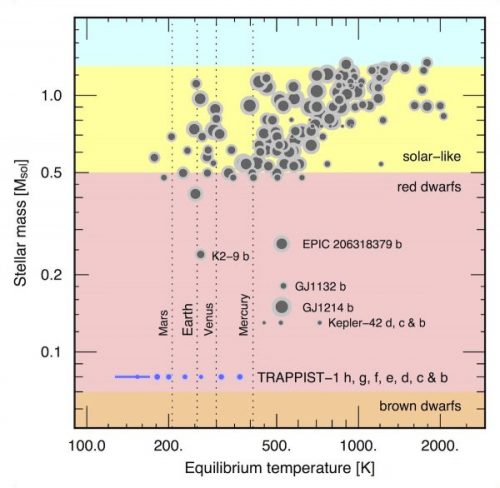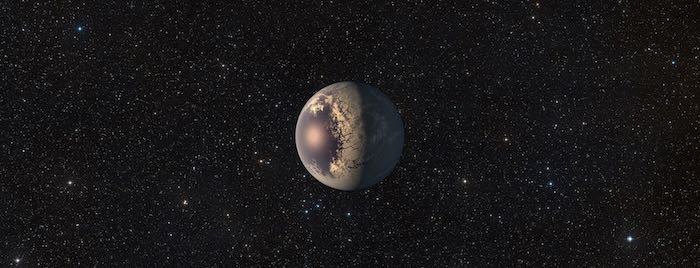Looking Up: Goldilocks and the seven planets
April 4, 2017
Senior Aileen Zhang’s column “Looking Up” is about breakthroughs, cool facts and ethics in modern science, especially astronomy. This week she discusses the seven TRAPPIST-1 planets discovered in February. Look up to the stars!

Pictured is the relative size of the sun with respect to the TRAPPIST-1a star.
On February 22, NASA announced the discovery of seven rocky planets around a nearby star. Not only is this a groundbreaking crop of new Earth-size rocky exoplanets, but the system also boasts three (three!) rocky planets with the potential to harbor life.
The TRAPPIST-1 system, named after the telescope in Chile that discovered it, is a mere 40 light-years away in the direction of the constellation Aquarius. Composed of solid rock, all seven of planets are about the size of Earth or Venus. Their parent star, called TRAPPIST-1a, is a small red dwarf that is much cooler than our sun. The planets also orbit much closer to their parent star than Earth does to the sun. In fact, the entire system could fit inside the orbit of Mercury. Because of their small orbital radii, the TRAPPIST-1 planets zip around rapidly. The innermost planet makes a complete revolution almost once a day, and the furthest planet makes the trip in less than three weeks.

This plot shows the temperature of discovered exoplanets (x-axis) in relation to the size of their parent star (y-axis). Each grey dot represents an exoplanet, with relative sizes shown by the width of each dot. The temperature of our solar system’s four terrestrial planets are shown with dotted vertical lines.
Notably, the planets TRAPPIST-1d, -1e, and -1f orbit in the “Goldilocks Zone,” a region neither too hot nor too cold to have liquid water on their surfaces. This fact has caused some to speculate whether the system could support life.
In the minds of science enthusiasts everywhere, these discoveries raised an inevitable question: could we colonize the TRAPPIST-1 system? It’s not too far away, and nanoscale solar-powered probes could make a round trip within the century, with human colonizers following in the millennium after.

Pictured is TRAPPIST-1f, one the the planets that has been speculated to harbor life.
These planets might seem perfect for human exploration, but “just right” might not be right at all. What probes would find on TRAPPIST-1d, -1e, or -1f is an unfamiliar and lifeless world. The intense UV radiation from the nearby parent star could strip water from the atmosphere and planet surface. The close orbits are likely tidally locked, meaning that one side of the planet remains in broiling sunshine while the other side remains in perpetual night. Any colonizers would be confined to the band of twilight girdling the planet, pent in by desert and ice. The vast temperature difference would also create enormously strong winds that could scour the surface and disturb any potential colonies. The strong tidal forces of the close orbit cause each planet to flex like a squeezed stress ball, generating vast amounts of internal heat. Spectroscopic analysis of the atmosphere suggests that the planets could be Venusian in density, with thick, cloying cloud cover over the entirety of the surface.
What would a colonizer’s life look like? Perhaps an extraterrestrial beach getaway in the rays of a permanent sunset. Perhaps an existence scraped out in narrow tunnels to avoid the high winds and the punishing radiation. But one thing is for sure: colonization won’t be possible for a long, long time, certainly far beyond any of our natural lifetimes. For now, we should preserve our own beaches and sunsets, our own deserts and plains. The more one looks to the stars, the more one recognizes the miracles of the earth.

